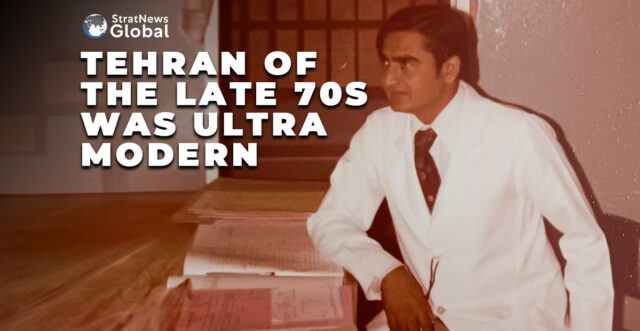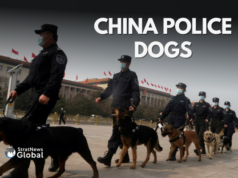Forty-six summers have passed from the time Dr Mohsin Raza arrived in Tehran from Aligarh to serve in a hospital but he has vivid memories of the Iranian Revolution.
Dr Raza was 36 years old when he arrived in snow-covered Tehran on January 22, 1978 with hopes of a great career. He was pleasantly surprised to find that women enjoyed ample freedom and wore short skirts.
Ironically, Tehran of the late 70s was ultra-modern and liberal where women enjoyed ample freedom in sharp contrast to present day Iran. He recalls that in those days, ladies in Tehran wore short skirts and enjoyed a lot of freedom but in Qom, they had to cover themselves in a ‘Chaadar.’
Dr Raza had no inkling that he would witness a historic revolution within eight months.
He was among 90 doctors and nurses who were selected and the only doctor in that batch who was nominated by AMU
After spending a couple of months in Raza Shah Kabeer Bimaristan in Tehran, he was posted to the religious capital, Qom, 140 -km away. Hardly had he settled into his new job in a large Bimarsitan Kamkar (Persian name for hospital) that the Revolution began. The transition was not easy as Qom was a cultural contrast to Tehran.
With the revolution in full swing, Dr Raza’s daily schedule came to be dictated by midnight calls for removing bullets from bodies of injured locals who had been shot in clashes with the Army and police.
“I worked day and night during the Revolution in Iran. The Persian newspapers praised my work and began to describe me as the Surgeon of the Revolution (1978-’79). I earned so much respect and goodwill that shopkeepers near the Tomb of Hazrat Masooma, would refuse to take money from my family members when they went shopping.”
“I have removed bullets from every part of the body of those who were shot by the police and the army. I treated all sorts of trauma cases. In a single day, I was treating nearly fifty victims of road accidents. What kept me going was the hospital director Dr Bani Fatmi who treated me like a son,” he recalled.
He regrets that he was not able to save the life of a 14 year- old boy who was injured in firing. He died on the operation table in Bimaristan Kamkar “ I was able to save many lives but I regret that I could not save lives of all injured persons.’’
He says that although the Army and the police had instructions only to open fire in the air to quell the mob, clearly that was not the case with some protestors dying due to gunshot injuries.
“It was alleged their bodies were airdropped by the Shah’s helicopters into Sultan Salt Lake. During the revolution, many people went missing,” he said.
Dr Raza’s experience of three and a half years in Iran gave him an insight into social, political and religious life. He has fond memories of shaking hands with Ayatollah Khomeini, the Supreme leader, on three occasions.
“Ayatollah Khomeini was a very pious and straightforward man. I was quite impressed by him and would even try to speak like him to the amusement of my Iranian friends.”
He says, “The Islamic clergy had planned the revolution so secretly that even SAVAK, the much dreaded Iranian secret police and intelligence service, failed to detect the undercurrent of the revolution.’’
During the revolution, curfew was imposed at night. “ I was once stopped at gunpoint by the army in Qom at midnight when I was going to see a patient. Luckily, a policeman recognized me.’’
It did not take Dr Raza too long to get some idea of how the Iranian intelligence system worked. “After being selected, I was asked to provide 60 passport size pictures. In my early days in Qom, I was taken aback when a few policemen addressed me by my name on the streets. I realized that my pictures may have been circulated to law enforcement agencies to identify the entry of a foreigner into Iran.’’
He remembers the day the Revolution came to an end in February, 1979. “The Army, the police and Royal Guards came face to face with millions of people who had come out on the streets in Tehran. As doctors, we were prepared for heavy casualties but suddenly, General Abbas Karabari, Supreme Commander of the Armed Forces, ordered that the police and the army should go back to the barracks.’’
Dr Raza was watching State-run Iranian television in his house when this order was telecast. ‘’People began distributing sweets and embracing army and police personnel to mark the victory of their movement. The government fell and the Revolutionary Guards took over the country with Ayatollah Khomeini as their leader. The logo of State TV which showed a lion holding a sword changed overnight to a lion holding an olive branch.’’
Dr Raza, his wife Sohaila and daughters, Farah and Sumbul, made great friends in Iran. “ The Iranians were very friendly and hospitable and had a culture of bringing presents. Every Friday morning, a group of 15-20 Iranian nurses would come to our house to eat poori- subzi but would lend a helping hand to my wife in cooking, washing dishes and cleaning up the entire house.’’
He recalled his first glimpse of Shah Reza Shah Pehlavi. “ I was only 14 years old when I met the King of Iran and his second wife, Mallika Soraya during their visit to AMU in March, 1956. She was so stunning that the entire university was enamoured by her beauty.’’
“At that time, only two kings in the world, Haile Selassie of Ethiopia and Mohamed Reza Shah Pehlavi of Iran were addressed as His Majesty Imperial and got a 27 gun salute whenever they went overseas. He was a graduate from Sandhurst Military College in the UK and ruled with an iron fist.’’
‘’Three weeks before the Revolution came to an end, the king flew out of Tehran with his family in his own aeroplane which was called Nishaan. I still remember the the pictures of him kissing the tarmac before leaving for the United States. Ayatollah Khomeini who was living in exile in France, arrived two weeks after the King left.’’
“I left Iran in 1980 because there was not a single English medium school in Qom where I could send my children. I moved to Oman where I worked from 1981 to 2011.’’
On present day Iran, Dr Raza says, “ Despite sanctions by the United States and Europe, Iran has advanced militarily and scientifically to such a great extent that it is exporting Iranian missiles even to Russia. Iranian missiles are considered among the best in the world and are even a threat to the United States.’’
This surgeon loves Iran and can never forget the affection the Iranians showered on him during his stay there. “ It has been almost half a century but I am still in touch with the children of some of my patients.’’
Delhi based journalist pickled in journalism. Have reported from nine world capitals and almost all parts of India. Over the last three decades, I have worked for India’s mainstream English dailies and contributed to All India Radio, Doordarshan and Women’s Feature Service. Also worked for international media including Japan’s leading newspaper, The Asahi Shimbun and done assignments for The Sunday Times, London, The Telegraph, The Guardian and the Canadian Broadcasting Corporation. Worked in the Embassy of France in New Delhi and can speak French to save my life. Write on Diplomacy, Politics and the social sector. Love Nature, heritage, Nature, animals and vintage cars. Enjoy cycling and playing badminton.





